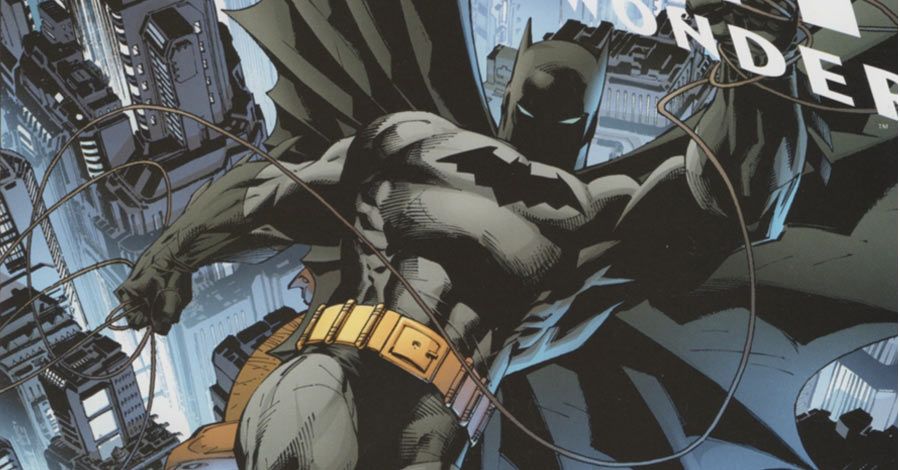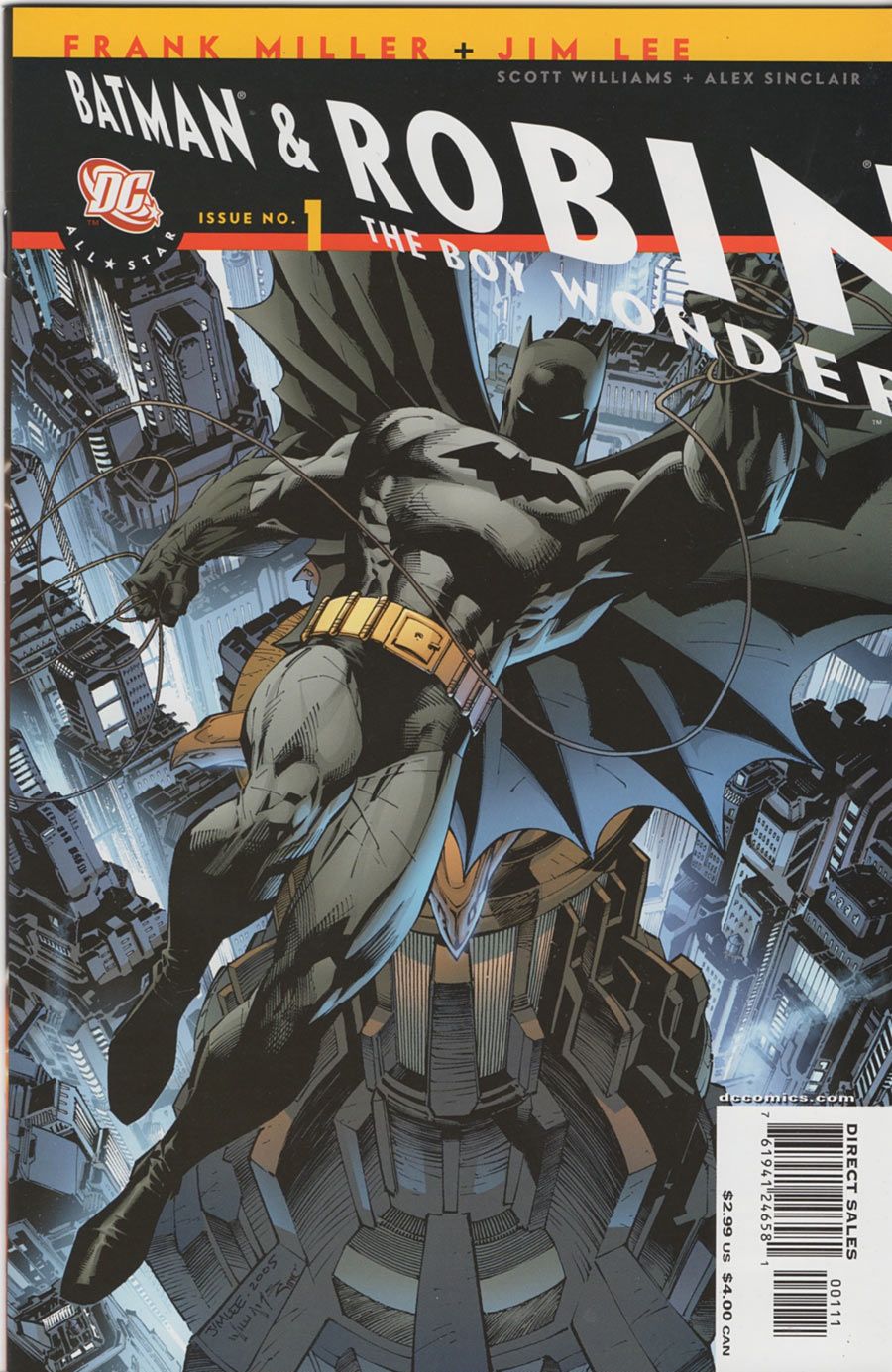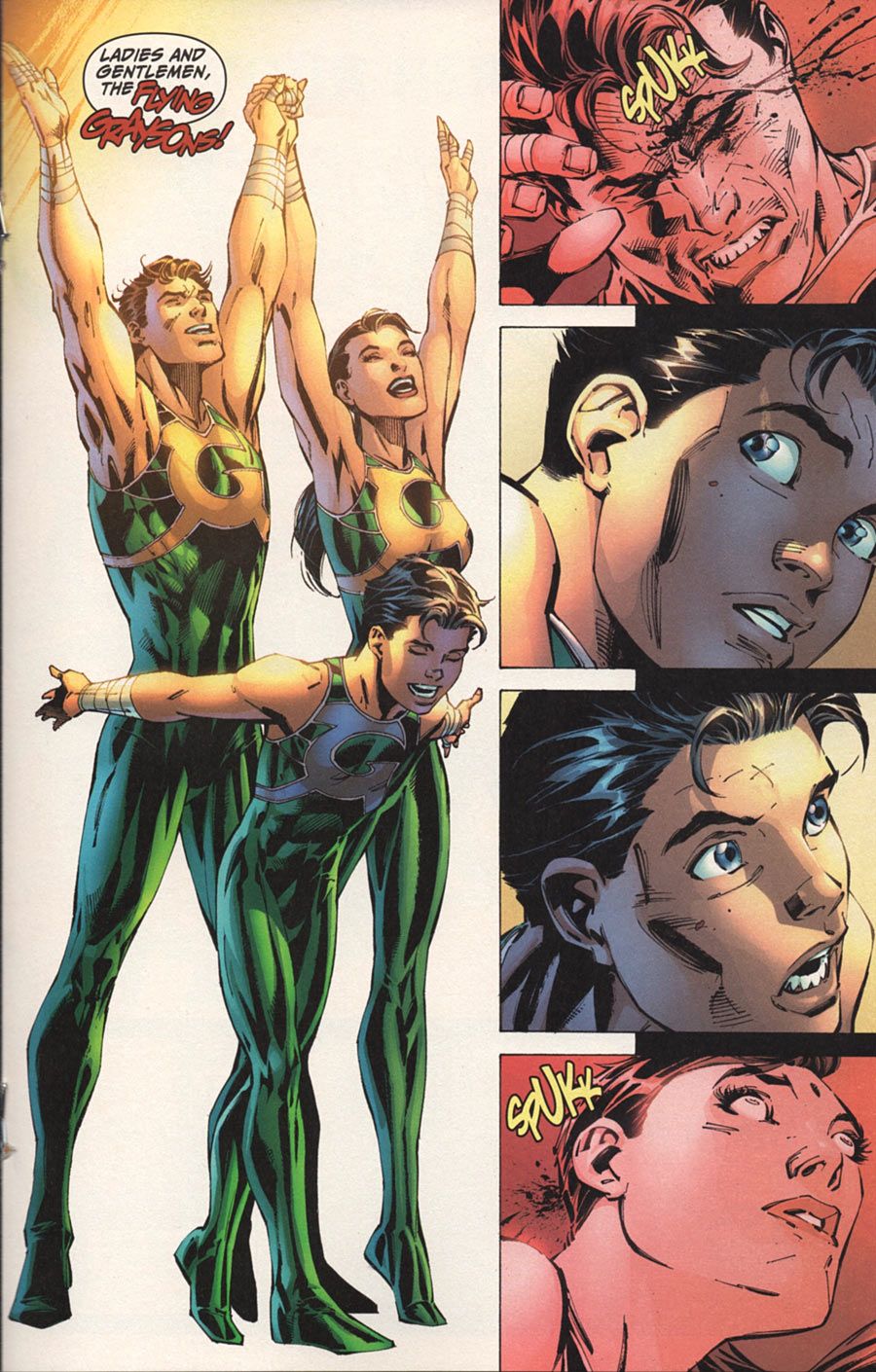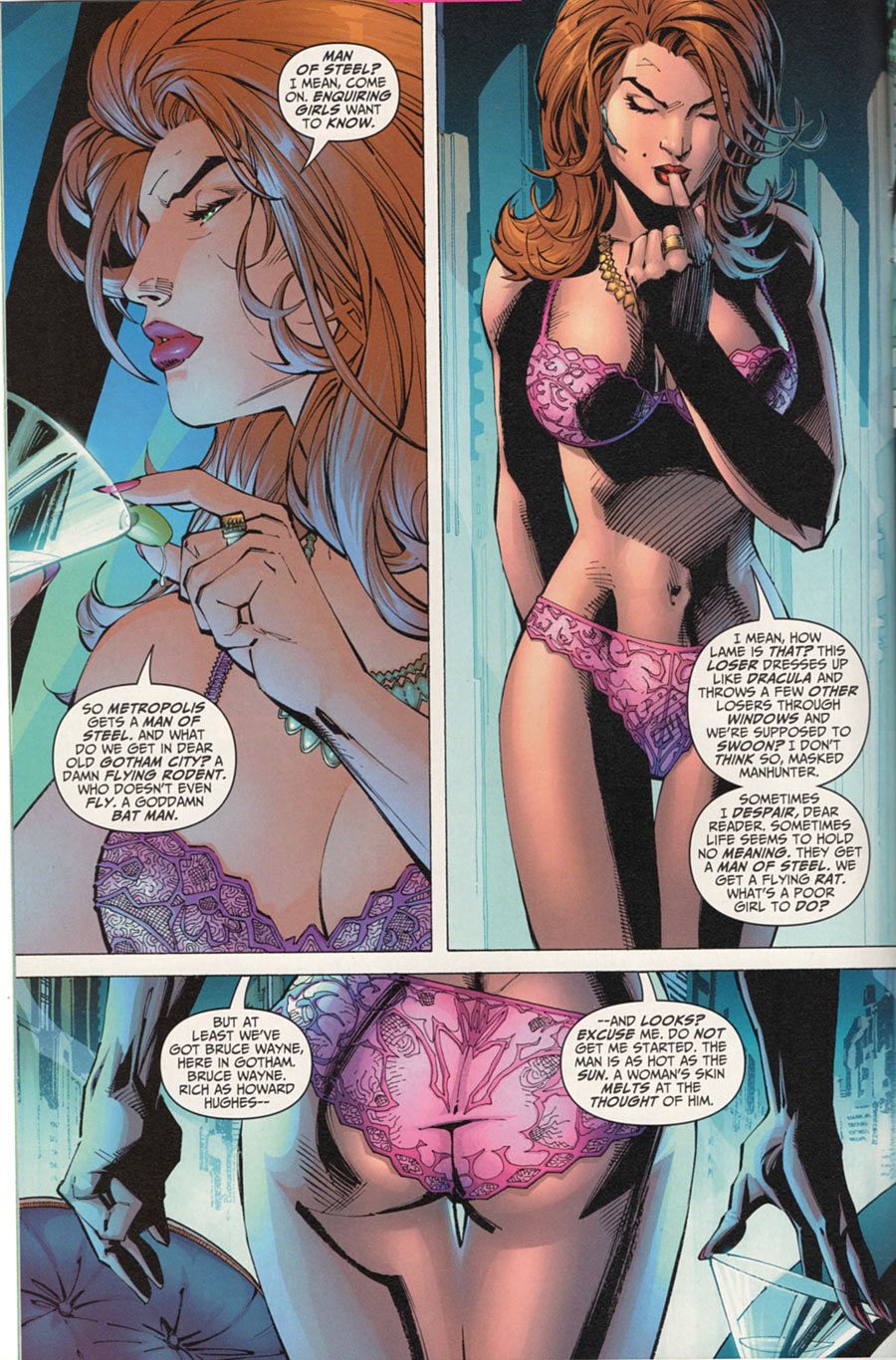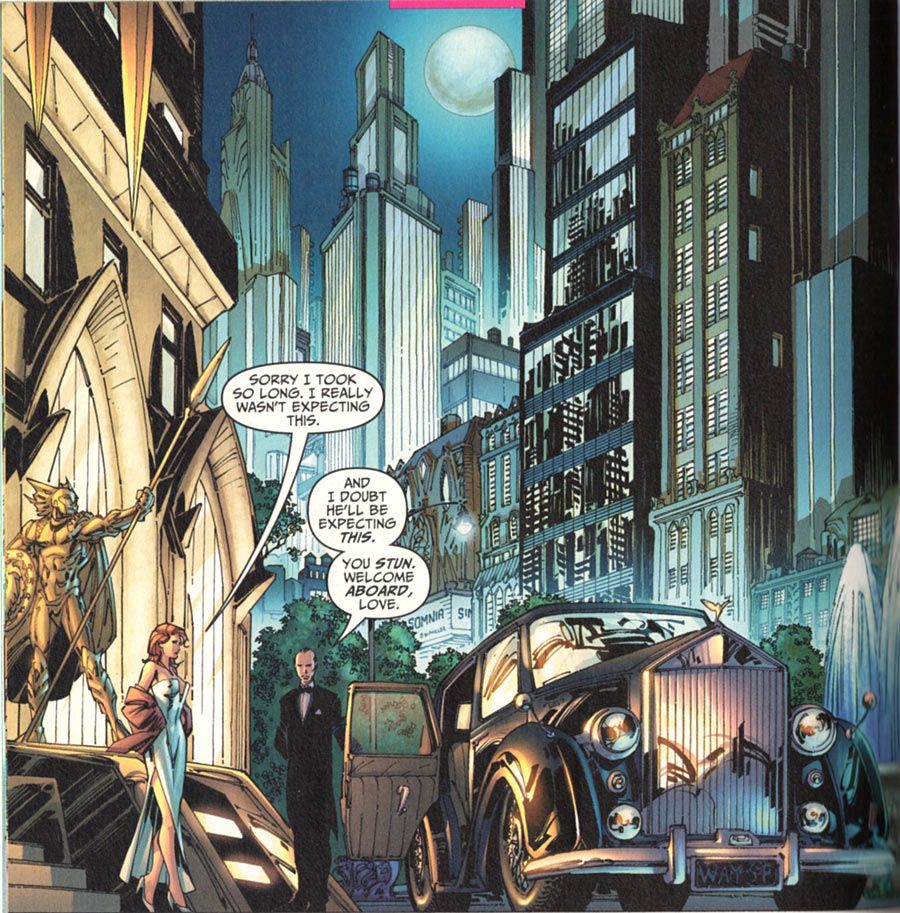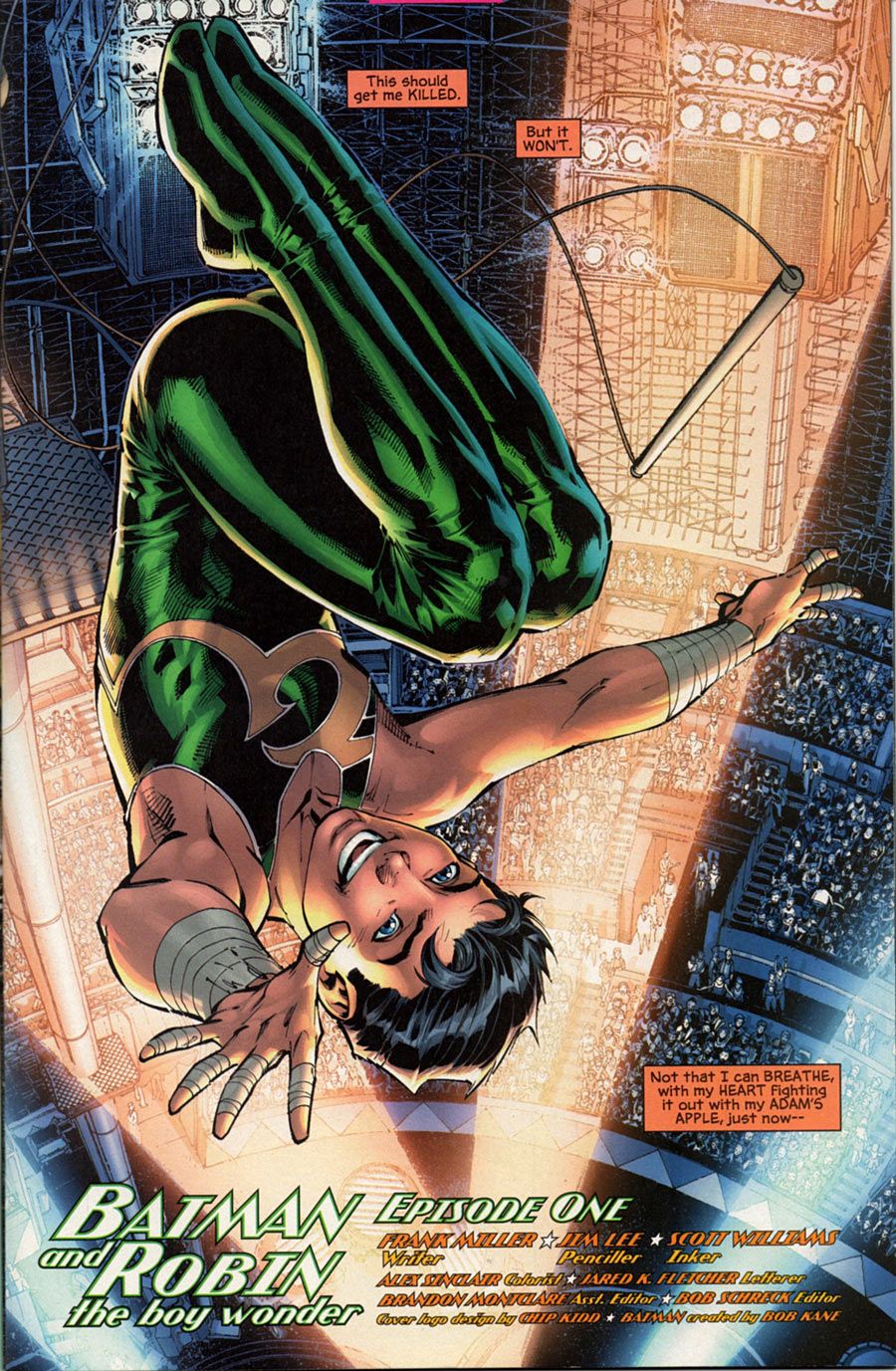GET RID OF IT. ALL OF IT?
A crazy thought entered my mind this week. It's one I know lots of long-time comics readers/collectors have had. They say it's inevitable. I never thought it would happen to me -- until it did.
"I don't need all these comics."
I love my comic collection. When I flip through the longboxes filled with 20 years' worth of comics collecting, I inevitably find things I forgot about or things I want to reread. They often spark memories of visits to the comics shop or artists' tables at conventions. That's why I keep them all.
The truth, though, is that I don't flip through those longboxes as often as I once did. I've become of those nearing-middle-aged men who realizes that there's never enough time for it. I'm becoming the cliche.
That thought entered my mind:
"They're weighing me down. I'd love to not have to sort through them anymore."
My collection is a mess right now. My Man Cave is littered in boxes and books piled up everywhere. Organizing it all is only getting harder, not easier. Getting it all in order would take an investment of time and money I'm afraid I don't have. Buy a few new longboxes, take a couple days off from work, empty everything out that I have and re-sort all of it? Not going to happen.
Part of this is probably spurred on by The Purge II. Last year, I got rid of hundreds of trades and hardcovers. This year, I'm putting together the next go-around and I've piled up a couple hundred books to dump. Still, it seems like a drop in the bucket. It's amazing to see how things that seemed impossible to get rid of last year are so much easier to dump this year. If I did enough rounds of this, I might eventually be able to justify getting rid of it all.
Somedays, the idea of "ripping off the Band-Aid" is appealing, too. Just dump them all now.
There was a guy at my old comic shop who told the tale of the day he had a dumpster in his driveway and literally just shoved all his longboxes into it. He felt free.
The rest of us gasped.
I'm not planning on renting that dumpster anytime soon. The very fact that the thought entered my mind, though, is interesting.
I once wanted to have a comics library, vast and wide. Nowadays, I want a highly curated collection with the best of the best. Why waste time with the rest?
PIPELINKS
- Watch Freddie Williams II ink Thanos. It's mesmerizing what he can do with ink.
- The Scriptnotes podcast looks at the slate of 31 upcoming superhero movies, mostly from DC and Marvel. Then, they explain why it's very doubtful that those schedules will stand, and why they're anything mostly posturing in the first place.
- See John Byrne holding up a 30 x 40 inch commission, and then check out his price list.
- The director of the next "Smurfs" movie uses the Papercutz editions of the original comics as reference material. Smart man. Everything he blogs about on that website, by the way, fills me with confidence for the movie, which is still a couple years away.
- Watch "Kids React to DuckTales" and feel old all over again. Or, see a prime educational opportunity.
THE EPIC "All-Star BATMAN AND ROBIN THE BOY WONDER" RE-READ, Episode One
It's been a few years since the Frank Miller/Jim Lee series came out. At the time, it was a controversial book for numerous reasons, from tone to printing problems to the lax shipping schedule.
It threw everyone off.
Rereading it now at a distance, though, it's far less controversial for me. It's a straight-up fun, albeit crazy and nearly off-the-rails-but-in-a-good-way, book. It's exactly not what you were expecting. Jim Lee had just come off "Batman: Hush" and "Superman For Tomorrow." With Frank Miller writing and a new imprint at DC to host the book, people were expecting, I guess, the "Ultimate" version of Batman.
Miller went in a different direction, all right. I'm not sure everyone went along for the ride, and that's why it went badly for the series in the opinion wars on-line. Take this series as a standalone new interpretation of the characters, and you have a winner. Read it in one go instead of in spurts across three years, and it flows much better.
If you were expecting a light modification of the Batman mythos with a retelling of favorite stories from the past, you went to the wrong place.
Miller and Lee fit a few major characters into this series, but they're not barely recognizable in attitude and characterization. These are dramatically new interpretations, including Black Canary as an Irish bartender (is this Hell's Kitchen, Frank?) and Hal Jordan as, well, completely clueless.
This is Miller and Lee pushing all the boundaries in a Batman book, making characters into something that would almost qualify as caricatures of themselves. It's cartoony, it's over-the-top, and it's brilliantly fun.
Is it outright satire? While parts of it feel like that, I think it's more just Miller not taking any of this too seriously and going off into uncharted territories.
There's a lot of ground to cover in the series, and it would be impossible to talk about it all in one column. So, welcome to The McSpidey Chronicles' new sibling, for which I have no name because the comic's title is too long already.
"All-Star Batman and Robin the Boy Wonder" lasted ten issues. Coincidentally, there are 9 more Tuesdays left in the year after this. If I buckle down, this can be done before the new year, when I'll pick something else to chronicle again.
The goal here is to re-examine the work divorced from the issues of its time. Let's take this body of work -- just this year released as an Absolute edition that I must treat myself to eventually -- and point out why it works, how it works, and all the ways Miller and Lee subverted your expectations and created a comic as terrifyingly fun as "All-Star Batman and Robin the Boy Wonder."
The End of the Flying Graysons: The series starts with Dick Grayson on the flying trapeze, smiling and enjoying his time under the big top. The narration is pure Frank Miller. It hammers home simple phrases through repetition, short or clipped sentences that convey all the meaning the author needs to put in his reader's mind. A strong rhythm builds, almost like a poem running through your head as your eyes process the gorgeous Jim Lee art.
"Mom and Dad." "They always catch me." "They're always there for me." "They're always there for me." "I fly."
That last caption box has nothing to do with the rest of them, seemingly, but paired with the smile on young Grayson's face and his position flying in the air, you realize that his confidence and his skills come from a strong relationship with parental figures who loved and cared for him, combined, of course, with a lifetime of dedicated practice.
Knowing just a smidgeon of the history of these characters, you know immediately that this is also Miller setting up Grayson for a fall. It's the cliche of storytelling: the more the character expresses his or her happiness with something at the beginning of the movie/comic/novel, the more obvious it is that it won't last long.
Sure enough, a few pages later, Dick Grayson misses his connection on the trapeze and begins to fall to the ground. Then he whips out a grappling hook and saves himself at the last minute. All part of the show, folks! Bruce Wayne, watching from the stands, knew Grayson was showboating. Wayne is a fan, and has been scouting Grayson for future potential as a crime-fighting partner. The rest of the audience clearly wasn't sure what was going on.
Nor, I bet, were the readers. With a reimagining of the series, any change is possible. Maybe Miller was going to kill the kid and make his father the new Robin or something. Maybe the mob cut Kid Grayson's line instead of his parents?
You could relax on that splash page of Dick Grayson saving himself. Then, two pages later, while standing triumphantly between his parents, a gunman kills them both. As you'd expect, Lee immediately echoes Bruce Wayne's formative moment, with a down angle on Dick Grayson lost and sad between his parents bleeding on the floor around him.
At this point, the true changes in the Batman mythos begin to come to light. Bruce Wayne disappears from the grandstands and assumes his Batman identity. He successfully nails the murderer with a poison bat-dart. Batman's caption boxes are the first clue that this Batman is something different:
"Snake poison." "Turns out the stuff works." "I hope it's got some NASTY side effects." "As a matter of fact, I CHECKED." "It DOES. This killer will be pulling BUGS that aren't THERE out of his EARS for a MONTH."
Ewww, Batman, you're nasty when you're drunk.
But he's not drunk. He's just a different character. We'll see more of that later in the issue, though it isn't until issue two that things get very obvious and the most entertaining.
The build-up to seeing this new Batman carries the reader through the back half of the issue. At first, you only see a fist or the tip of a cape. It isn't until the last page that you see Batman standing in full view, and it's a dramatic splash to end on.
Vicki Vale: Ace Columnist, Gossiper, Bruce Wayne Admirer: Earlier in the issue, we're introduced to Vicki Vale, who is a "columnist," a "gadfly," and "trouble," according to Frank Miller's captions. Honestly, she doesn't have much of a point in this series at all in the ten issues that were ever made. Maybe she played a bigger role near the end of the intended series, but we'll never know.
At best, she's there to give the reader a point of view into Bruce Wayne's world, showing us a character who's more dedicated and taken with Batman's alter ego than the caped crusader, himself. In "All-Star Batman and Robin," Batman is definitely the real character, with "Bruce Wayne" being the alter ego.
She's also parading around in her Gotham City apartment in her hot pink underwear, wearing heels, and sipping an adult beverage. There are no blinds on her floor-to-ceiling windows. She's nothing if not completely confident in her body image.
The average human body is about seven heads tall, maybe eight. Vicki Vale runs closer to ten here, most of it in her legs. That's a Jim Lee style trait, though. Lee hits what he's aiming for here -- hot chick with a mad-on for Bruce Wayne. It's completely on the nose, complete with the most gratuitous butt shot in the history of comics. (Look closely at the pattern, though. Is that a butterfly, or a bat-symbol?)
The second panel is the most visually interesting of the lot, just for the games it plays with shadows and volume. There's some backlighting to account for the rim light around the edges, and then a secondary light source up high and to the reader's left, explaining the shadow across her stomach and the light on top of her left hand and face. The only thing Lee and his inker, the always-present Scott Williams, missed was the shadow that probably should have been on the right side of her face from those light sources.
But it's the first panel that deserves the most attention. This panel is the first use of the phrase that the series would become synonymous with, "a GD Batman." Pipeline is generally "family friendly" and tries hard not to swear. So forgive me the abbreviation of the phrase in this column. You know what I mean, though.
It's a phrase that Batman won't use until the next issue, but would quickly become a hallmark of the series, with someone or other repeating it in every issue. I don't know if that was planned from the start or a reaction to the public's reaction to the series, but it's brilliant. It's always laugh-out-loud funny.
After opining about the greatness of Bruce Wayne and the double entendres inherent in Superman's nickname, Alfred shows up at Vale's door to ask her for a date on behalf of his master. Wayne is just that detached from humanity that he sends Alfred to do the dirty work. This, of course, leads to another type of sequence Lee has drawn before, probably in a Chris Claremont X-Men script: the montage scene where the woman tries on a variety of outfits.
Don't take this to mean that Vale is portrayed as a bimbo in the book. Far from it. After the events at the circus, she takes a hit from the Gotham PD, she races Alfred's car in pursuit of the police, and works hard to snap photographic proof of a crime in progress in spite of any self-preservationist feelings she might have otherwise had.
It doesn't end terribly well for her, but she's not just another pretty face.
Jim Lee draws pretty cities. Lee's art hits its peak in the series for non-superhero artistry at the end of the Vickie Vale sequence, as Vale walks out the door to Alfred and the classic car he's using to shepherd Mr. Wayne around. Just gape at this panel for a moment. I've long wanted to do an "Architecture of Comics" blog, just to show how some artists draw great cityscapes and buildings. It's a much overlooked part of the job. This half page panel blows me away.
Lee had done some remarkable bits of architecture in both "Batman: Hush" and "Superman For Tomorrow." My favorite "Hush" issue was the Harley Quinn story inside the opera house, if just for the backgrounds and how everything looked so grounded and real because of them.
This shot, though, blows me away. It should be a simple shot. Vale walks out the front door of her apartment building and jumps in Alfred's waiting car. Instead, we see some architecture on the front of her building with the peaked arches and the statue of the soldier holding a spear. Alfred's car is a pretty spiffy looking thing. And the city of Gotham is laid out behind with tall skyscrapers at night, yellow windows piercing out from darkened buildings.
Look carefully and you'll see that one building's mirrored wall of windows is actually showing you a reflection of the building across the street from it. As the buildings recede into the distance, the lines get thinner and the detail fades away. It's a similar approach to the opening splash showing Vale. In it, the cityscape can be seen outside her apartment's tall windows. Those buildings are less detailed and use thinner lines, giving them a little distance and even giving the windows between the reader and the buildings a little more weight and power.
It's the little details like that which create more dimensional art. That Lee can take the time to draw all those buildings and all those windows is just icing on the cake. The cover is just as impressive, though, with a wide down angle on Batman and Gotham city in the fish-eye behind him, light gleaming up the buildings from the streets below. Credit to Alex Sinclair for his deft use of colors that keep the dark Batman from disappearing into a sea of dark buildings at night.
Jim Lee spared no expense with his art. If you ever doubted Jim Lee's commitment to his art or his level of patience, look carefully at the opening splash page.
Closer:
There's 100 people shown in this small part of the page. There are people cheering, people walking, people leaning forward, people turning their backs, people with their arms raised... There might be a photo referenced here, but it isn't traced. It's not exactly highly detailed, but it's also not the bundle of squiggles Lee could have gotten away with just to fill the space and give the appearance of a full crowd.
He must have drawn hundreds of people in the background. (By my estimates, it's at least in the high 200s.) Yes, they're loose gestural drawings, most of the people looking alike. But he still drew heads and shoulders for what must be hundreds of people in the stands at the circus that day. That's in addition to the detail in the ceilings, where the scaffolding, speakers, and lighting can be seen. Sinclair's colors correctly underplay this achievement. They're concerned with the flying Dick Grayson popping out towards the reader, and with the lighting feeling true and natural. You can see some of the light sources in the image, and Sinclair accounts for them. But that solid color in the background hides the ridiculous number of people Jim Lee roughly drew on this page.
I wish I had the Absolute edition of this book just to scan the page in bigger. Heck, I wish there was an Artist's Edition to show you all the detail in pure black and white.
And the crime of it all is? 99% of the people reading this comic looked at Dick Grayson, read the three caption boxes, and turned the page inside of 10 seconds.
That kind of thing must drive comic artists nuts.
Next Issue: We meet Batman. He's a nasty psychotic son of a gun with a cool car and a way of convincing people to agree with him.
Ran out of space this week, but I'm hoping to pair up The McSpidey Chronicles with "All-Star Batman and etc. etc. etc.", alongside the usual news of the week and review summaries. We here at Pipeline World Headquarters prefer comics to sleeping.
Twitter || E-mail || Instagram || Pipeline Message Board || VariousandSundry.com || AugieShoots.com || Original Art Collection || Google+

